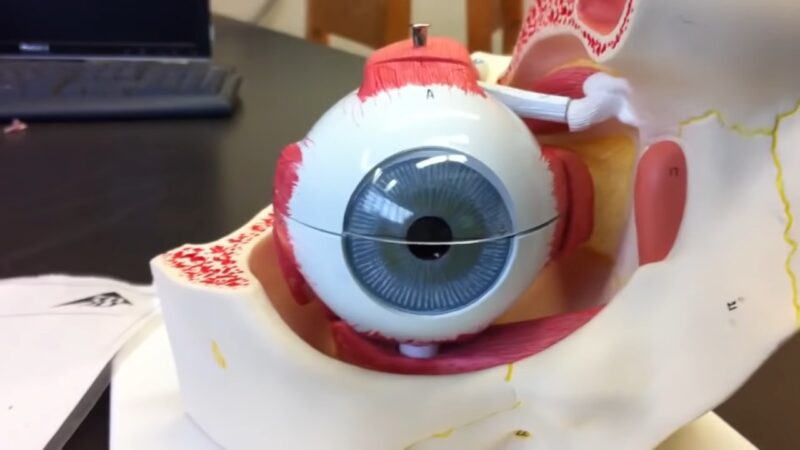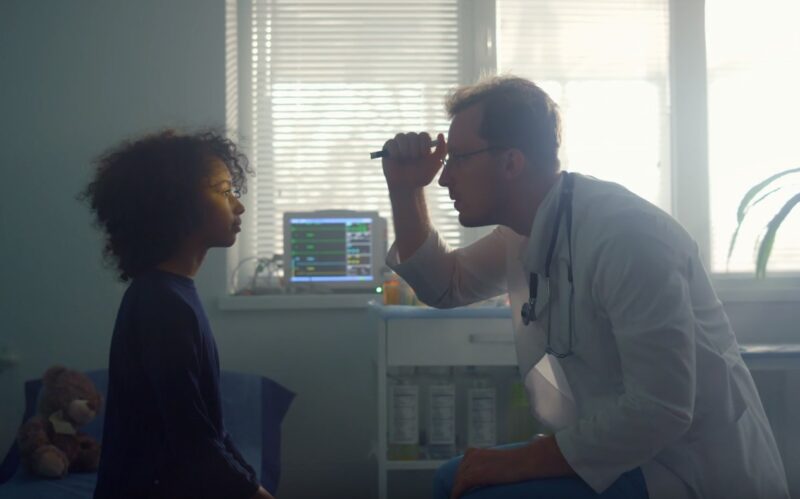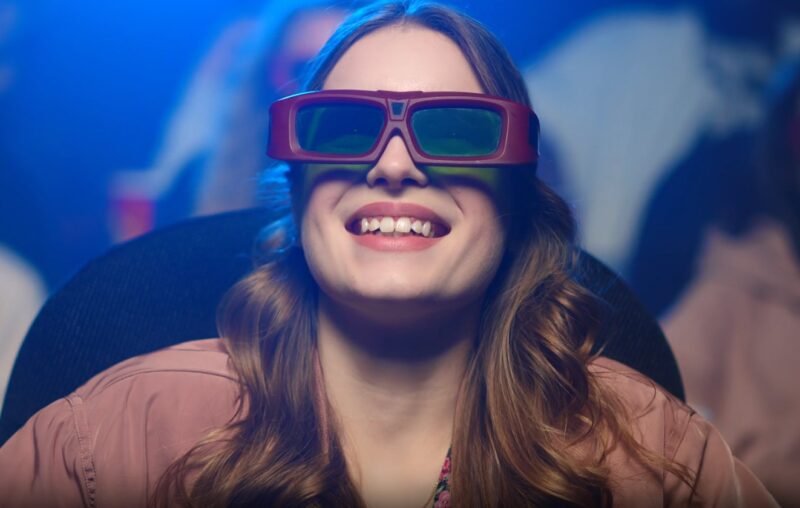Have you ever wondered how your eyes work together to provide you with a seamless and three-dimensional view of the world around you? The answer lies in a fascinating phenomenon known as binocular vision.
Binocular vision is the ability to use both eyes to perceive depth and distance. It is made possible by the slight difference in the images that each eye sees.
In this article, we’ll explore this unique ability of human perception in detail.
Seeing the World in Stereo

As we already mentioned, this phenomenon is the ability of our eyes to work together as a coordinated team to create a single, unified visual perception. Unlike monocular vision, where one eye sees an image independently, binocular vision merges the images captured by each eye into a cohesive and three-dimensional view.
Why Two Eyes Are Better Than One
But why do we have two eyes instead of just one? The evolutionary advantages of binocular vision are profound. Having two eyes provides us with several critical benefits:
- Depth Perception: Binocular vision allows us to perceive depth accurately. This is crucial for tasks such as catching a ball, judging distances when driving, or simply navigating through our environment without constantly bumping into objects.
- Wider Field of View: Having two eyes gives us a broader field of view, enhancing our situational awareness and ability to detect potential threats or opportunities from various angles.
- Redundancy and Reliability: In case one eye is compromised due to injury or fatigue, we can still rely on the other eye to maintain functional vision. This redundancy is a built-in safety net.
How It Works
The magic of binocular vision lies in the brain’s ability to process the slightly different images received from each eye and fuse them into a single, coherent image. This fusion process, known as stereopsis, is what creates the perception of depth.
Intriguingly, each eye sees the world from a slightly different perspective, thanks to their lateral separation on our face. This difference in perspective results in what is known as binocular disparity, which the brain uses to calculate the relative distance of objects in our field of vision.
The Anatomy

To understand binocular vision fully, we must first take a closer look at the remarkable anatomy of our eyes. These complex organs are finely tuned precision instruments designed to capture and process visual information.
- Cornea and Lens: The process begins with the cornea and lens, which focus incoming light onto the retina at the back of each eye. The cornea provides most of the focusing power, while the lens fine-tunes the focus for near or far objects.
- Retina: The retina is a light-sensitive layer at the back of each eye, covered in millions of photoreceptor cells called rods and cones. These cells convert incoming light into electrical signals, which are then transmitted to the brain via the optic nerve.
- Optic Nerve: The optic nerve serves as the communication highway between the eyes and the brain. It carries the visual information collected by the retinas to the brain for processing.
Bringing the World Together
One crucial aspect of binocular vision is convergence. Convergence refers to the ability of our eyes to turn slightly inward when focusing on a close object.
This coordinated movement ensures that both eyes are aimed at the same point in space, allowing us to merge the images accurately.
Binocular Disparity
As mentioned earlier, the slight difference in perspective between the two eyes results in binocular disparity. This difference is more pronounced for close objects and less so for distant ones.
The brain uses the amount of disparity between the images from each eye to calculate the depth of objects in our visual field.
Development and Benefits

Binocular vision is not something we are born with; it develops over time. In infancy, babies have limited binocular abilities as their eyes learn to coordinate properly.
The development of binocular vision is a crucial milestone in a child’s visual development and typically begins at around 3 to 4 months of age.
The Role of Experience
Experience plays a significant role in refining binocular vision. As we grow and gain more exposure to the world around us, our brain becomes better at interpreting the subtle differences between the images received by each eye.
This refinement enhances our ability to perceive depth and judge distances accurately.
Influence on Daily Life
From reading a book to driving a car, binocular vision influences almost every aspect of our daily lives. Here are some practical scenarios where binocular vision is essential:
- Reading and Text Comprehension: Binocular vision allows us to comfortably read the text and understand its context by perceiving the subtle depth cues in printed words.
- Hand-Eye Coordination: Activities such as playing sports, cooking, or even threading a needle require precise hand-eye coordination, which is made possible by binocular vision.
- Driving Safety: When we drive, we rely on our ability to judge the distance between vehicles, traffic lights, and road signs accurately, all thanks to the phenomenon.
In the World of 3D Entertainment

If you’ve ever been captivated by the immersive world of 3D movies, you’ve witnessed binocular vision technology in action. 3D films leverage the principles of binocular vision to create a sense of depth and realism that goes beyond traditional 2D cinema.
Here’s how it works: By presenting slightly different images to each eye, 3D glasses or projection technology simulates binocular disparity. This artificial disparity tricks your brain into perceiving depth, making objects on the screen appear closer or farther away.
The result is a thrilling and visually engaging cinematic experience.
Virtual Reality (VR) and Augmented Reality (AR)
The advent of virtual reality and augmented reality has taken binocular vision to new heights. VR headsets and AR glasses use specialized lenses and sensors to track the movement of your eyes and create a convincing 3D environment.
This technology relies on precise synchronization between what your eyes see and how your head moves, ensuring a seamless and immersive experience. In VR gaming, for instance, binocular vision is integral for players to interact with virtual worlds, accurately judge distances, and feel fully immersed in the game’s environment.
Similarly, AR glasses overlay digital information onto the real world, enhancing our perception by merging virtual and physical elements.
Treating Vision Disorders and Amblyopia
Not everyone enjoys the benefits of fully functional binocular vision. Conditions like strabismus (crossed eyes) and amblyopia (lazy eye) can disrupt the coordination between the eyes, leading to reduced or absent binocular vision.
These conditions often develop during childhood and require early intervention for optimal outcomes.
Vision Therapy
Vision therapy is a specialized treatment that aims to improve binocular vision in individuals with vision disorders. This therapy involves a series of exercises and activities designed to enhance eye coordination and strengthen the visual system.
With patience and dedication, many individuals with strabismus or amblyopia can significantly improve their binocular vision.
Advancements in Treatment
Modern technology has introduced innovative tools and techniques for treating vision disorders. Vision therapists now utilize computer programs, virtual reality simulations, and specialized equipment to make therapy engaging and effective.
These advancements offer hope to individuals who previously had limited options for improving their binocular vision.
FAQ
Can Babies See in 3D Right Away?
No, babies are not born with fully developed binocular vision. It starts developing around 3 to 4 months of age as their eyes learn to coordinate.
Is It the Same as Having 20/20 Vision?
No, binocular vision refers to the ability to merge two separate images into one for depth perception, while 20/20 vision measures the clarity or sharpness of sight at a distance.
Do People with One Eye Have Depth Perception?
People with one eye or monocular vision can have depth perception, but it’s less accurate than binocular vision. They rely more on contextual cues like size, shadow, and motion.
Can These Issues Be Corrected in Adulthood?
Yes, adults can improve binocular vision through specialized vision therapy, although the effectiveness can vary depending on the individual and the condition.
How Do 3D Glasses Enhance Binocular Vision in Movies?
3D glasses work by presenting slightly different images to each eye, creating artificial binocular disparity, which the brain processes as depth, enhancing the cinematic experience.
Does Wearing Glasses or Contact Lenses Affect the Vision?
Glasses and contact lenses primarily correct the clarity of vision. They can affect binocular vision if the prescription is significantly different between eyes, but generally, they are designed to support and enhance binocular vision.
Final Words
In conclusion, the wondrous mechanics of binocular vision unveil a crucial aspect of human experience. This remarkable ability, formed through the fusion of images from our two eyes, not only grants us the gift of depth perception but profoundly influences our interaction with the world.
From daily activities like reading and driving to enjoying immersive 3D entertainment and VR experiences, binocular vision is indispensable. It shapes our perception of reality, enriches our experiences, and even plays a role in our survival by broadening our field of view and providing redundancy.
However, it’s important to recognize that binocular vision is a learned skill, developing gradually in infancy and honed through experience. This fact underlines the importance of early detection and intervention in conditions like strabismus and amblyopia, which can disrupt this intricate visual harmony.
Thankfully, advancements in vision therapy and technology continue to offer improved outcomes, demonstrating the resilience and adaptability of our visual system.
